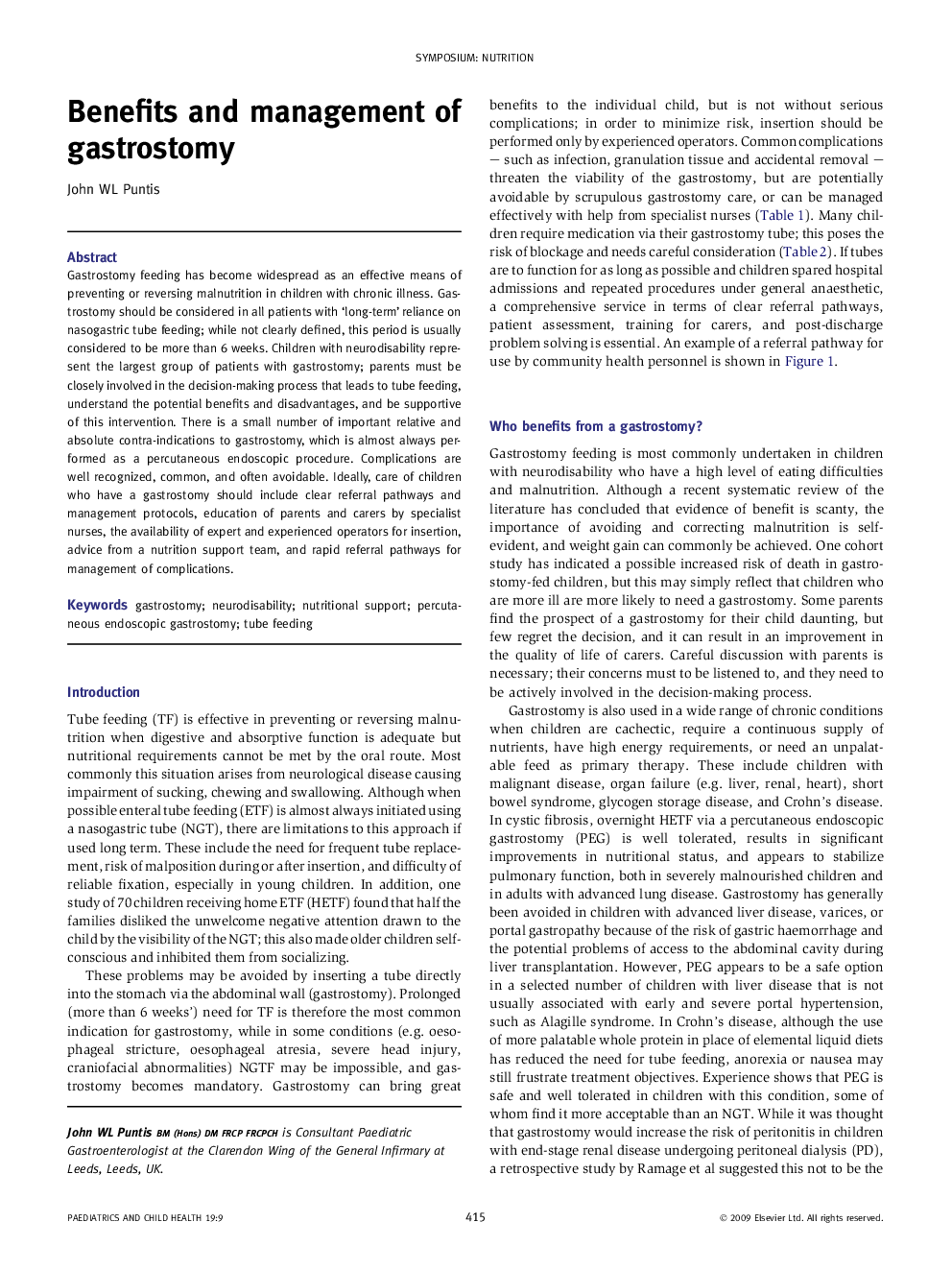| Article ID | Journal | Published Year | Pages | File Type |
|---|---|---|---|---|
| 4172826 | Paediatrics and Child Health | 2009 | 10 Pages |
Gastrostomy feeding has become widespread as an effective means of preventing or reversing malnutrition in children with chronic illness. Gastrostomy should be considered in all patients with ‘long-term’ reliance on nasogastric tube feeding; while not clearly defined, this period is usually considered to be more than 6 weeks. Children with neurodisability represent the largest group of patients with gastrostomy; parents must be closely involved in the decision-making process that leads to tube feeding, understand the potential benefits and disadvantages, and be supportive of this intervention. There is a small number of important relative and absolute contra-indications to gastrostomy, which is almost always performed as a percutaneous endoscopic procedure. Complications are well recognized, common, and often avoidable. Ideally, care of children who have a gastrostomy should include clear referral pathways and management protocols, education of parents and carers by specialist nurses, the availability of expert and experienced operators for insertion, advice from a nutrition support team, and rapid referral pathways for management of complications.
